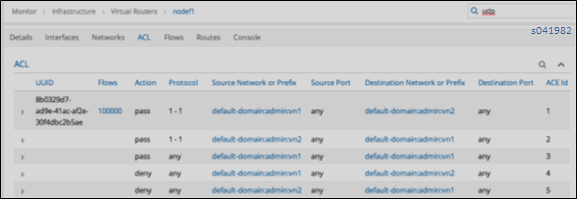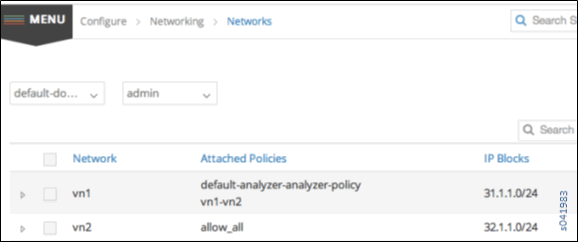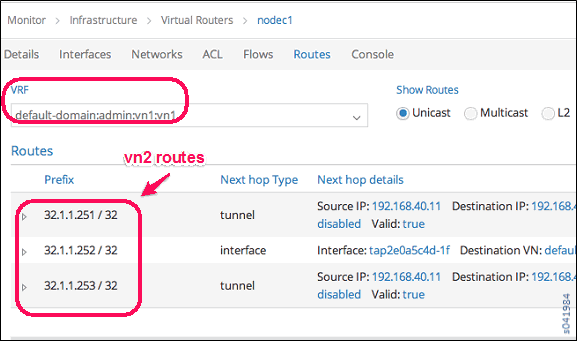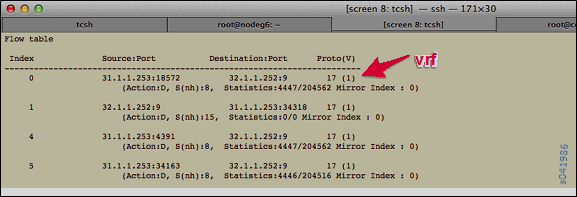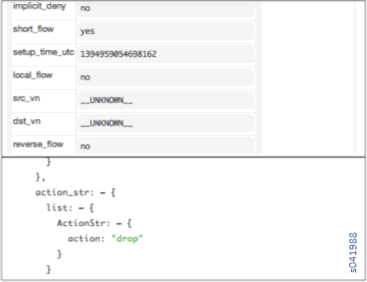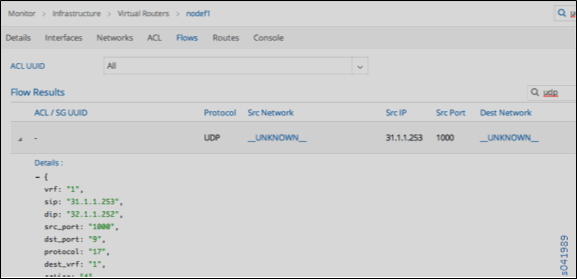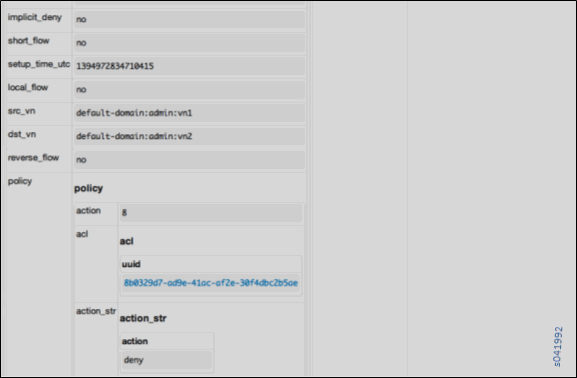- play_arrow Overview
- play_arrow Understanding Contrail Controller
-
- play_arrow Installing and Upgrading Contrail
- play_arrow Supported Platforms and Server Requirements
- play_arrow Installing Contrail and Provisioning Roles
- Introduction to Containerized Contrail Modules
- Introduction to Contrail Microservices Architecture
- Downloading Installation Software
- Overview of contrail-ansible-deployer used in Contrail Command for Installing Contrail with Microservices Architecture
- Installing Contrail with OpenStack and Kolla Ansible
- Configuring the Control Node with BGP
- Contrail Global Controller
- Role and Resource-Based Access Control
- play_arrow Installation and Configuration Scenarios
- Setting Up and Using a Simple Virtual Gateway with Contrail 4.0
- Configuring MD5 Authentication for BGP Sessions
- Configuring the Data Plane Development Kit (DPDK) Integrated with Contrail vRouter
- Configuring Contrail DPDK vRouter to Run in a Docker Container
- Configuring Single Root I/O Virtualization (SR-IOV)
- Configuring Virtual Networks for Hub-and-Spoke Topology
- Configuring Transport Layer Security-Based XMPP in Contrail
- Configuring Graceful Restart and Long-lived Graceful Restart
- Remote Compute
- Dynamic Kernel Module Support (DKMS) for vRouter
- play_arrow Upgrading Contrail Software
- play_arrow Backup and Restore Contrail Software
- play_arrow Multicloud Contrail
- play_arrow Using Contrail with Kubernetes
- Contrail Integration with Kubernetes
- Installing and Managing Contrail 5.0 Microservices Architecture Using Helm Charts
- Provisioning of Kubernetes Clusters
- Using Helm Charts to Provision Multinode Contrail OpenStack Ocata with High Availability
- Using Helm Charts to Provision All-in-One Contrail with OpenStack Ocata
- Accessing a Contrail OpenStack Helm Cluster
- Frequently Asked Questions About Contrail and Helm Charts
- Contrail Deployment with Helm
- Verifying Configuration for CNI for Kubernetes
- Kubernetes Updates to IP Fabric
- Implementation of Kubernetes Network Policy with Contrail Firewall Policy
- play_arrow Using VMware vCenter with Containerized Contrail
- vCenter Integration for Contrail Release 5.0
- vCenter Integration for Contrail Release 5.0.1
- vCenter Integration for Contrail Release 5.0.2
- Underlay Network Configuration for ContrailVM
- Using the Contrail and VMware vCenter User Interfaces to Manage the Network For Contrail Releases 5.0 and 5.0.1
- Using the Contrail and VMware vCenter User Interfaces to Manage the Network For Contrail Release 5.0.2
- Integrating Contrail Release 5.0.X with VMware vRealize Orchestrator
- Installing and Provisioning Contrail VMware vRealize Orchestrator Plugin
- play_arrow Using Contrail with Red Hat
- play_arrow Contrail and AppFormix Kolla/Ocata OpenStack Deployment
- Contrail and AppFormix Deployment Requirements
- Preparing for the Installation
- Run the Playbooks
- Accessing Contrail in AppFormix Management Infrastructure in UI
- Notes and Caveats
- Example Instances.yml for Contrail and AppFormix OpenStack Deployment
- Installing AppFormix for OpenStack
- Installing AppFormix for OpenStack in HA
- play_arrow Using Contrail with Juju Charms
- play_arrow Contrail Command
- play_arrow Extending Contrail to Physical Routers, Bare Metal Servers, Switches, and Interfaces
- Understanding Bare Metal Server Management
- Configuring High Availability for the Contrail OVSDB ToR Agent
- Using Device Manager to Manage Physical Routers
- SR-IOV VF as the Physical Interface of vRouter
- Using Gateway Mode to Support Remote Instances
- REST APIs for Extending the Contrail Cluster to Physical Routers, and Physical and Logical Interfaces
- play_arrow Contrail for Data Center Automation and Fabric Management
-
- play_arrow Configuring Contrail
- play_arrow Configuring Virtual Networks
- Creating Projects in OpenStack for Configuring Tenants in Contrail
- Creating a Virtual Network with Juniper Networks Contrail
- Creating a Virtual Network with OpenStack Contrail
- Creating an Image for a Project in OpenStack Contrail
- Creating a Floating IP Address Pool
- Using Security Groups with Virtual Machines (Instances)
- Support for IPv6 Networks in Contrail
- Configuring EVPN and VXLAN
- Support for EVPN Route Type 5
- play_arrow Example of Deploying a Multi-Tier Web Application Using Contrail
- play_arrow Configuring Services
- play_arrow Configuring Service Chaining
- play_arrow Examples: Configuring Service Chaining
- play_arrow Adding Physical Network Functions in Service Chains
- play_arrow QoS Support in Contrail
- play_arrow BGP as a Service
- play_arrow Load Balancers
- play_arrow Optimizing Contrail
-
- play_arrow Contrail Security
- play_arrow Contrail Security
-
- play_arrow Contrail Commands and APIs
- play_arrow Contrail Commands
- play_arrow Contrail Application Programming Interfaces (APIs)
-
Debugging Ping Failures for Policy-Connected Networks
This topic presents troubleshooting scenarios and steps for resolving reachability issues (ping failures) when working with policy-connected virtual networks.
These are the methods used to configure reachability for a virtual network or virtual machine:
Use network policy to exchange virtual network routes.
Use a floating IP address pool to associate an IP address from a destination virtual network to virtual machine(s) in the source virtual network.
Use an ASN/RT configuration to exchange virtual network routes with an MX Series router gateway.
Use a service instance static route configuration to route between service instances in two virtual networks.
This topic focuses on troubleshooting reachability for the first method --- using network policy to exchange routes between virtual networks.
Troubleshooting Procedure for Policy-Connected Network
Summary
This topic explores one area —debugging for policy-based routing. However, in a complex system, a virtual network might have one or more configuration methods combined that influence reachability and routing.
For example, an environment might have a virtual network VN-X configured with policy-based routing to another virtual network VN-Y. At the same time, there are a few virtual machines in VN-X that have a floating IP to another virtual network VN-Z, which is connected to VN-XX via a NAT service instance. This is a complex scenario, and you need to debug step-by-step, taking into account all of the features working together.
Additionally, there are other considerations beyond routing and reachability that can affect traffic flow. For example, the rules of network policies and security groups can affect traffic to the destination. Also, if multi-path is involved, then ECMP and RPF need to be taken into account while debugging.
























